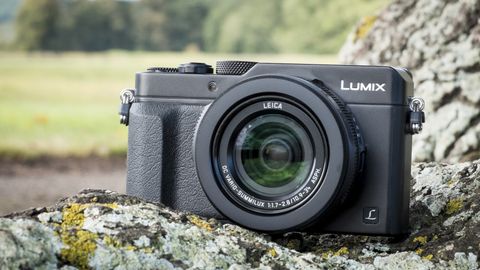Why you can trust TechRadar
I've been debating the issue of sensor size in a compact camera with Panasonic's Michiharu Uematsu for some considerable time now and I'm delighted that Panasonic has put a Four Thirds sensor in the LX100. It's clear that the company has invested a lot of effort in creating a lens that will complement the sensor and produce high quality images without being too large.
Traditional controls have also been high on my request list for Panasonic and it's great to see an aperture ring along with shutter speed and exposure compensation dials on the LX100 – they make the camera quick and easy to use.
It's interesting that although we are now used to the vast majority of compact cameras not having a viewfinder, as soon as one is available it is the default means of composing images. The LX100's electronic viewfinder is a major bonus and although the main screen on the back of the camera provides a decent view I automatically used the EVF most of the time. I only used the main screen when peering into the viewfinder would be very awkward.

We like
Having a Four Thirds sensor inside the LX100 means that image quality is much improved over the LX7, which has a 1/1.7-inch sensor. It also means that there's much greater ability to restrict depth of field, especially given the large maximum aperture.
The traditional controls, including a shutter speed dial, exposure compensation dial and aperture ring, allow you to make quick adjustments and also check settings at a glance. One caveat, however, is that if the lens is set to a focal length longer than the widest point the aperture will actually be narrower than the ring indicates if it is set to wide-open.
The camera also has a high quality feel and is comfortable to carry without a strap for long periods of time. The menu is also logically arranged and if the Quick Menu is set to Custom via the Custom menu, you can specify which options you want to access, cutting down scrolling time.
We dislike
Panasonic has favoured touchscreens in its G-series cameras and some compact cameras, but not the LX100. Doubtless this is to save on cost, but it's a shame as it would provide a very quick and easy method of setting the focus point. Making the screen vari-angle would also give the camera an extra edge when it comes to composing images from unusual angles.
In some respects I like the fact that the LX100 has a multi-aspect ratio sensor that is larger than is required by each potential format. It means that 16:9 format images are actually a little longer (4480x2520 pixels) than 4:3 format (4112x3088 pixels) images instead of being cropped versions. It means that it's best to set the aspect ratio at the point of capture and this is generally forces you to be more careful with composition. However, the knowledge that the sensor and lens are actually capable of producing images that have at least 13.8 million pixels does play on my mind a little, and I am sure there are photographers who would prefer to capture the largest images possible and then crop post-capture.
Although the lens on the LX100 is very good, it is prone to flare, and pretty extreme flare in some cases. It's a shame that Panasonic hasn't provided a lens hood or given the optic a bayonet fitting to attach one. It may be possible to attach one via the filter thread, but this is close to the front element and using it in such a way may cause vignetting.
Another problem with the LX100 is its size. It's not as big as the popular Fuji X100S, but it needs a fairly large pocket or small bag to contain it. It's not actually much smaller than the Panasonic GX7 or Olympus OM-D E-M10, and is larger than both the Panasonic GM1 and the new GM5, all of which have the benefit of accepting interchangeable lenses.
Final verdict
The LX100 is a nice solid feeling camera that produces very high quality images. It has plenty of control options and an extensive featureset including a superb viewfinder that makes composition easy even in very bright conditions. It is a real pleasure to use.
It's traditional controls may be off-putting for novice photographers, but they are a dream for enthusiasts.
The success of the Fuji X100S and its predecessor the X100 proves that there is a desire for a larger compact camera, but the LX100 is going to see competition from quite a few Micro Four Thirds compact system cameras.

